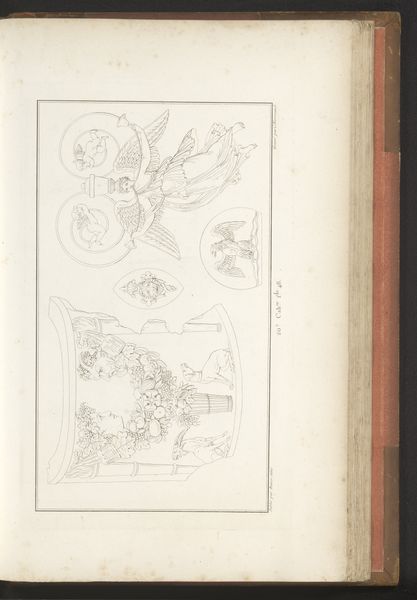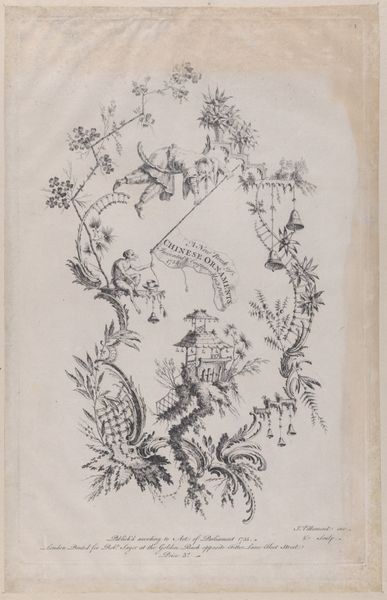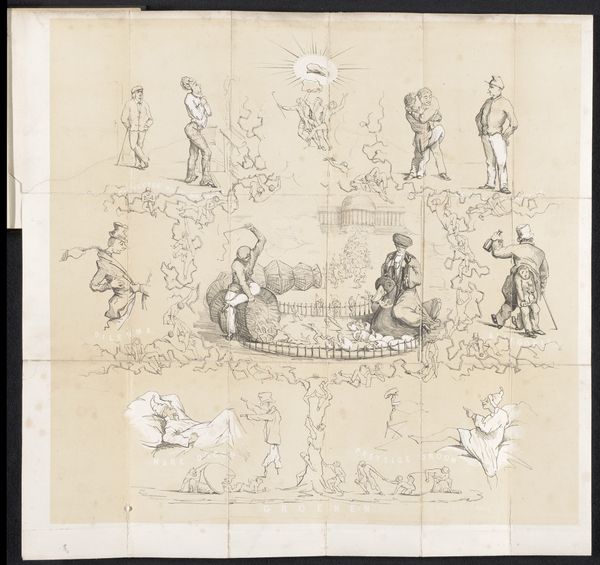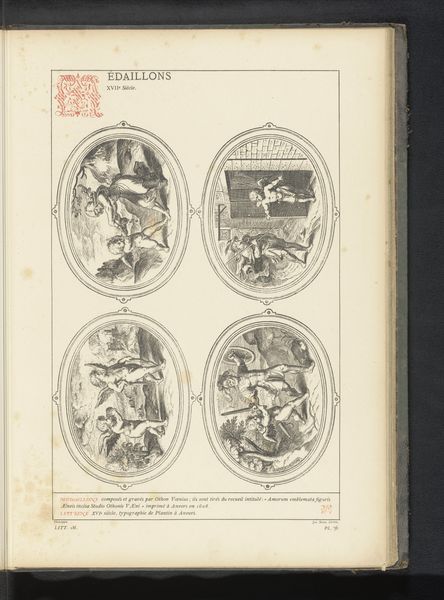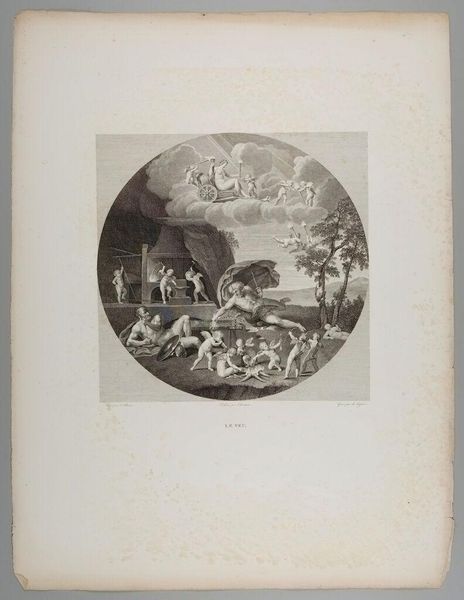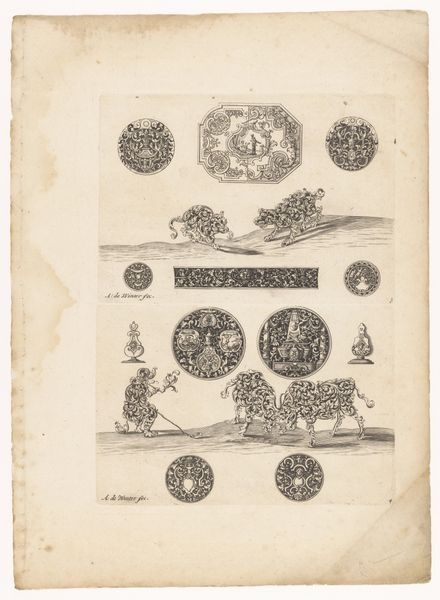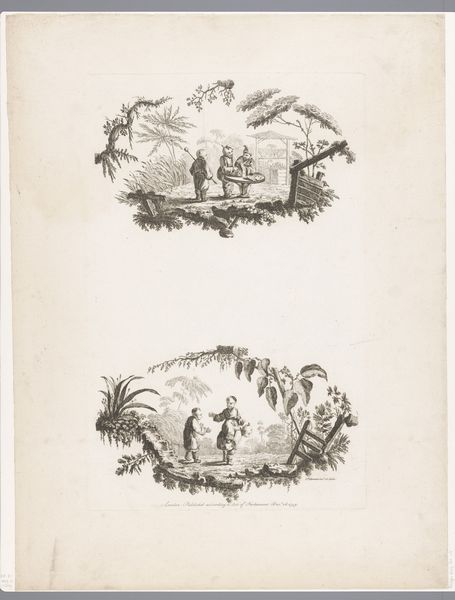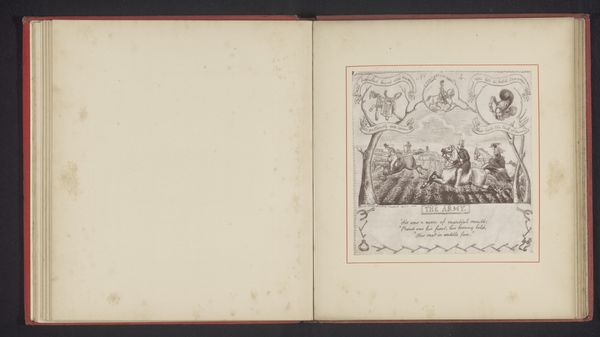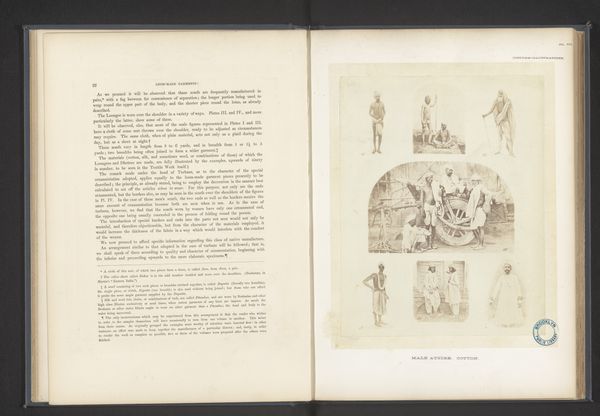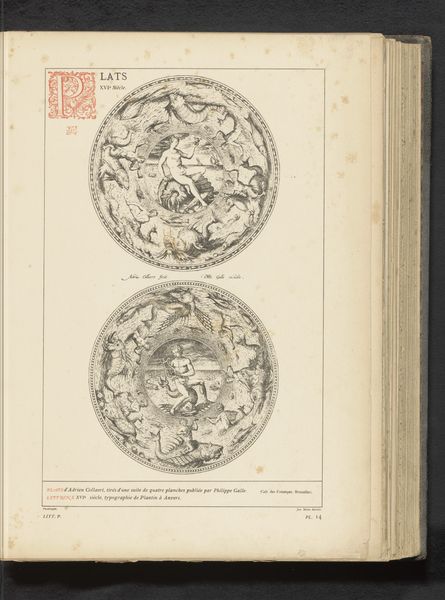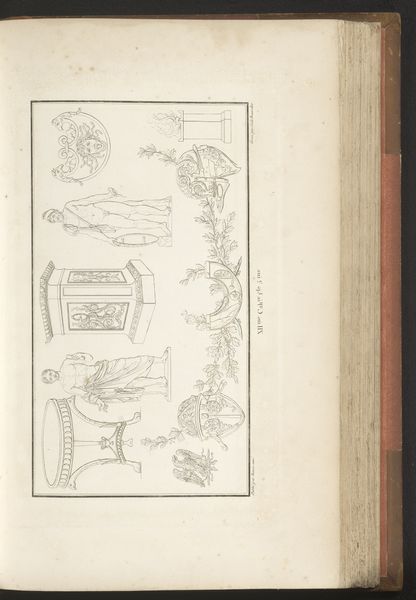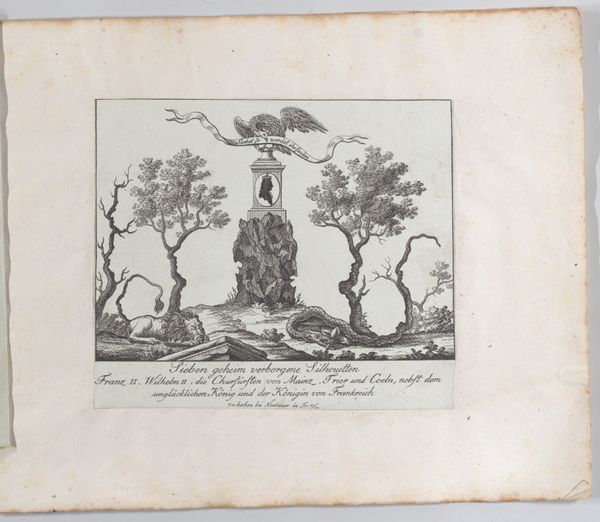
drawing, paper, ink
#
drawing
#
asian-art
#
figuration
#
paper
#
ink
#
coloured pencil
Dimensions: height 268 mm, width 119 mm
Copyright: Rijks Museum: Open Domain
This print by Pieter Schenk, dating from the late 17th or early 18th century, presents us with two scenes of Chinese life. They appear as illustrations in a book. These images aren’t simply neutral records. The book itself, and the act of illustration, demonstrate the European appetite for knowledge about China at this time. The upper image depicts Ni K’uan of the Han Dynasty, while the lower image depicts T’ien Chên and his two brothers. Note the framing devices, clearly a European intervention, that domesticate these figures within a Western aesthetic. What story might these imported images be telling a European audience? What assumptions are being made about Chinese society and culture? To understand this print, we need to look at the history of trade and cultural exchange between Europe and China at this time. We should also investigate the popularity of chinoiserie in European art and design, and the ways in which Chinese culture was understood – or misunderstood – by Europeans. Through careful research, we can begin to understand the complex relationship between these two cultures.
Comments
No comments
Be the first to comment and join the conversation on the ultimate creative platform.


